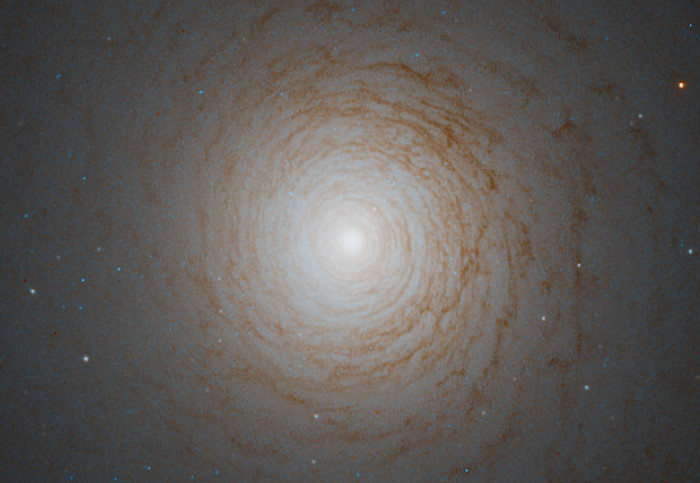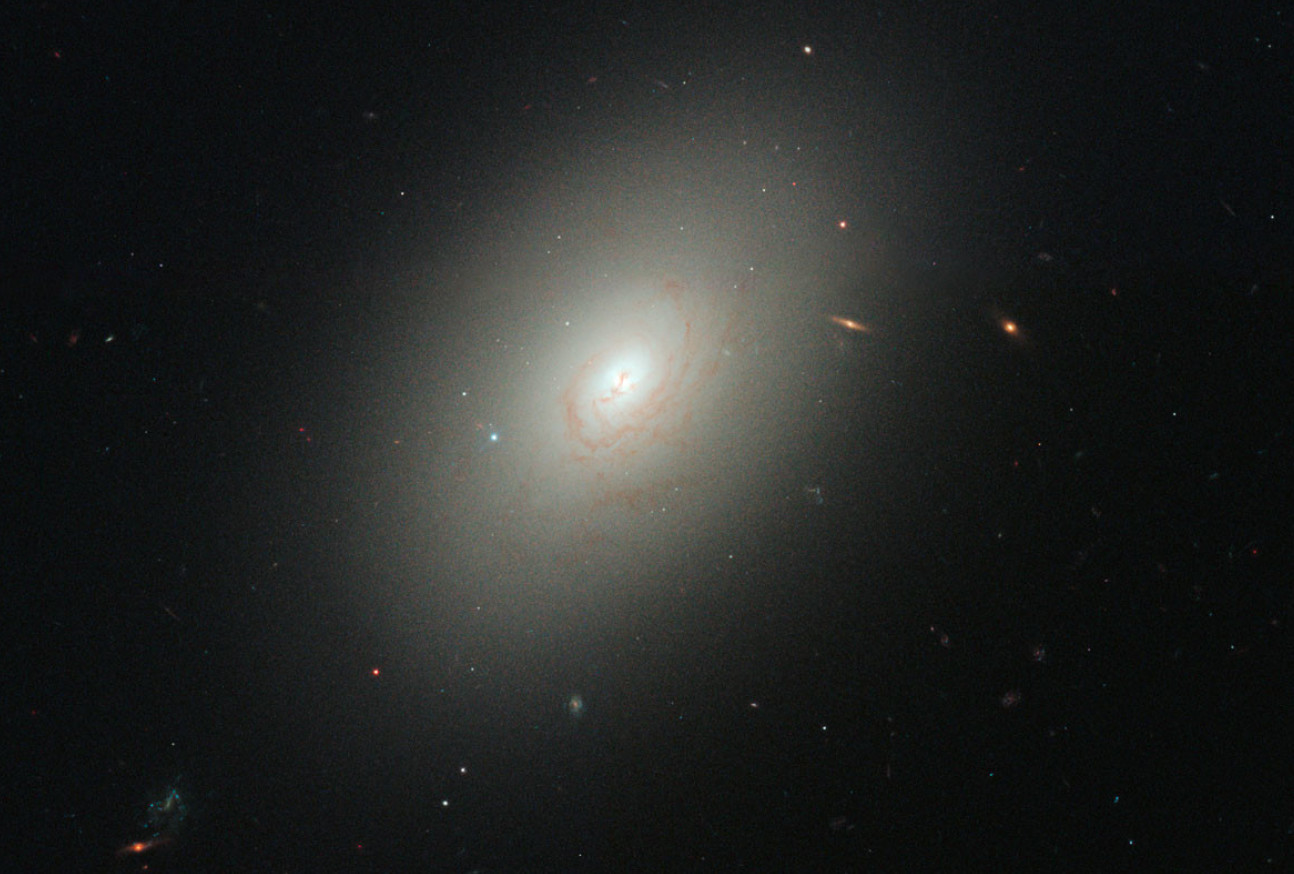Scientists find first evidence that black holes are the source of dark energy

One of the galaxies studied, NGC524. Credit: ESA/Hubble
Observations of supermassive black holes at the centres of galaxies point to a likely source of dark energy – the ‘missing’ 70% of the Universe.
The measurements from ancient and dormant galaxies show black holes growing more than expected, aligning with a phenomenon predicted in Einstein's theory of gravity. The result potentially means nothing new has to be added to our picture of the Universe to account for dark energy: black holes combined with Einstein’s gravity are the source.
We started off looking at how black holes grow over time, and may have found the answer to one of the biggest problems in cosmology. Dr Dave Clements
The conclusion was reached by a team of 17 researchers in nine countries, led by the University of Hawai’i and including Imperial College London and STFC RAL Space physicists. The work is published in two papers in the journals The Astrophysical Journal and The Astrophysical Journal Letters.
Study co-author Dr Dave Clements, from the Department of Physics at Imperial, said: “This is a really surprising result. We started off looking at how black holes grow over time, and may have found the answer to one of the biggest problems in cosmology.”
Study co-author Dr Chris Pearson, from STFC RAL Space, said: “If the theory holds, then this is going to revolutionise the whole of cosmology, because at last we've got a solution for the origin of dark energy that's been perplexing cosmologists and theoretical physicists for more than 20 years.”
Gravity versus dark energy
In the 1990s, it was discovered that the expansion of the Universe is accelerating – everything is moving away from everything else at a faster and faster rate. This is difficult to explain – the pull of gravity between all objects in the Universe should be slowing the expansion down.
To account for this, it was proposed that a ‘dark energy’ was responsible for pushing things apart more strongly than gravity. This was linked to a concept Einstein had proposed but later discarded – a ‘cosmological constant’ that opposed gravity and kept the Universe from collapsing.
This concept was revived with the discovery of the accelerating expansion of the Universe, with its main component being a kind of energy included in spacetime itself, called vacuum energy. This energy pushes the Universe further apart, accelerating the expansion.
Black holes posed a problem though – their extremely strong gravity is hard to oppose, especially at their centres, where everything seems to break down in a phenomenon called a ‘singularity’.
The new result shows that black holes gain mass in a way consistent with them containing vacuum energy, providing a source of dark energy and removing the need for singularities to form at their centre.
Black hole growing pains
The conclusion was made by studying nine billion years of black hole evolution. Black holes are formed when massive stars come to the end of their life. When found at the centres of galaxies, they are called supermassive black holes. These contain millions to billions of times the mass of our Sun inside them in a comparatively small space, creating extremely strong gravity.
 Black holes can increase in size by accreting matter, such as by swallowing stars that get too close, or by merging with other black holes. To discover whether these effects alone could account for the growth of supermassive black holes, the team looked at data spanning nine billion years.
Black holes can increase in size by accreting matter, such as by swallowing stars that get too close, or by merging with other black holes. To discover whether these effects alone could account for the growth of supermassive black holes, the team looked at data spanning nine billion years.
The researchers looked at a particular type of galaxy called giant elliptical galaxies, which evolved early in the Universe and then became dormant. Dormant galaxies have finished forming stars, leaving little material for the black hole at their centre to accrete, meaning any further growth cannot be explained by these normal astrophysical processes.
Comparing observations of distant galaxies (when they were young) with local elliptical galaxies (which are old and dead) showed growth much larger than predicted by accretion or mergers: the black holes of today are 7—20 times larger than they were nine billion years ago.
Cosmological coupling
Further measurements with related populations of galaxies at different points in the Universe’s evolution show good agreement between the size of the Universe and the mass of the black holes. These show that the measured amount of dark energy in the Universe can be accounted for by black hole vacuum energy.
This is the first observational evidence that black holes actually contain vacuum energy and that they are ‘coupled’ to the expansion of the Universe, increasing in mass as the Universe expands – a phenomenon called ‘cosmological coupling’. If further observations confirm it, cosmological coupling will redefine our understanding of what a black hole is.
Study first author Duncan Farrah, University of Hawai`i Astronomer and former Imperial PhD student, said: “We're really saying two things at once: that there's evidence the typical black hole solutions don't work for you on a long, long timescale, and we have the first proposed astrophysical source for dark energy.
“What that means, though, is not that other people haven't proposed sources for dark energy, but this is the first observational paper where we're not adding anything new to the Universe as a source for dark energy: black holes in Einstein's theory of gravity are the dark energy.''
-
‘A Preferential Growth Channel for Supermassive Black Holes in Elliptical Galaxies at z ? 2’ is published in The Astrophysical Journal.
‘Observational evidence for cosmological coupling of black holes and its implications for an astrophysical source of dark energy’ is published in The Astrophysical Journal Letters.
Article text (excluding photos or graphics) © Imperial College London.
Photos and graphics subject to third party copyright used with permission or © Imperial College London.
Reporter
Hayley Dunning
Communications Division